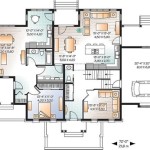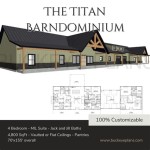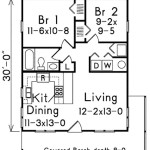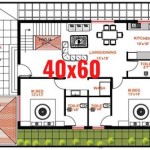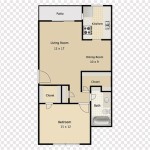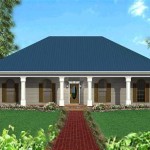Navigating House Plans and Building Costs: A Comprehensive Guide
Building a house is a significant undertaking, demanding careful planning and a thorough understanding of associated costs. This article aims to provide a comprehensive overview of house plans, the various factors influencing building costs, and strategies for effective budget management throughout the construction process. A well-informed approach is crucial for transforming architectural visions into tangible realities without compromising financial stability.
The initial stage involves conceptualizing the desired house design and translating it into detailed architectural plans. These plans serve as blueprints for the entire construction process, encompassing structural, electrical, plumbing, and mechanical systems. Accurate and comprehensive house plans are indispensable for obtaining building permits, securing financing, and soliciting accurate bids from contractors.
Understanding the nuances of house plans and building costs empowers prospective homeowners to make judicious decisions, optimize resource allocation, and mitigate potential financial risks. This document serves as a roadmap for navigating the complexities of home construction, ensuring a smoother and more predictable building experience.
Understanding the Components of House Plans
House plans are more than just drawings; they are detailed representations of the proposed structure, incorporating various elements crucial for accurate construction. A thorough understanding of these components is vital for effective communication with architects, contractors, and building officials.
Floor Plans: These are arguably the most fundamental component. They provide a top-down view of each level of the house, illustrating the layout of rooms, hallways, doors, windows, and built-in features. Precise measurements and dimensions are clearly indicated, ensuring accurate spatial allocation and functionality.
Elevations: Elevations depict the exterior appearance of the house from different perspectives, typically front, rear, and sides. These drawings showcase the architectural style, window placement, rooflines, and exterior finishes. Elevations are essential for visualizing the aesthetic impact of the design and ensuring compliance with neighborhood architectural guidelines and zoning regulations.
Foundation Plans: These plans detail the foundation system of the house, including the type of foundation (e.g., slab-on-grade, crawl space, basement), dimensions, and reinforcement specifications. The foundation plan is critical for ensuring the structural integrity and stability of the entire building, protecting it from ground movement and moisture intrusion.
Roof Plans: Roof plans illustrate the shape, slope, and materials of the roof. They specify the location of vents, chimneys, and other roof-mounted features. A well-designed roof plan is essential for proper drainage, weather protection, and aesthetic appeal.
Electrical Plans: These plans outline the electrical wiring system, including the location of outlets, switches, lighting fixtures, and electrical panels. Adherence to electrical codes is paramount for ensuring safety and preventing electrical hazards.
Plumbing Plans: Plumbing plans depict the layout of water supply and drainage pipes, fixtures (e.g., sinks, toilets, showers), and water heating systems. Proper plumbing design is essential for efficient water usage, sanitation, and compliance with plumbing codes.
Mechanical Plans: Mechanical plans detail the heating, ventilation, and air conditioning (HVAC) systems, including the location of ducts, vents, and equipment. Efficient HVAC design is crucial for maintaining comfortable indoor temperatures and air quality while minimizing energy consumption.
Structural Plans: These plans outline the structural components of the house, including walls, beams, columns, and floor joists. They specify the materials and dimensions of these components, ensuring the structural integrity and stability of the building. Structural plans are typically prepared by a licensed structural engineer.
Key Factors Influencing Building Costs
Building costs can vary significantly depending on a multitude of factors. A thorough understanding of these factors is essential for developing a realistic budget and making informed decisions throughout the construction process. Ignoring these factors can lead to unexpected cost overruns and potential project delays.
Size and Complexity of the House: The square footage of the house is a primary determinant of building costs. Larger houses require more materials, labor, and time to construct. Additionally, the complexity of the design, including intricate rooflines, custom features, and unusual architectural details, can significantly increase costs.
Materials and Finishes: The choice of building materials and finishes has a substantial impact on the overall cost. High-end materials, such as hardwood flooring, granite countertops, and custom cabinetry, will inevitably increase the budget compared to more standard options. Consider the long-term benefits and durability of materials when making selections.
Labor Costs: Labor costs constitute a significant portion of the overall building budget. These costs can vary depending on the location, the skill level of the tradespeople, and the demand for construction services. Obtaining multiple bids from qualified contractors is crucial for ensuring competitive pricing.
Site Conditions: The condition of the building site can significantly impact costs. Sites with challenging topography, poor soil conditions, or the presence of underground utilities may require additional excavation, grading, and foundation work. Environmental factors, such as wetlands or protected species habitats, can also impose restrictions and increase costs.
Location: Geographic location plays a significant role in building costs. Labor rates, material prices, and permit fees can vary widely from one region to another. Urban areas typically have higher building costs than rural areas due to increased demand and stricter building codes.
Permits and Fees: Building permits are required for most construction projects and can add to the overall cost. Permit fees vary depending on the municipality and the scope of the project. Additionally, other fees, such as impact fees and utility connection fees, may apply.
Customization and Upgrades: Custom features and upgrades can significantly increase building costs. These may include custom cabinetry, specialized lighting fixtures, smart home technology, or energy-efficient systems. Carefully weigh the benefits and costs of each upgrade before making a decision.
Unexpected Issues: Despite meticulous planning, unexpected issues can arise during construction, such as unforeseen soil conditions, hidden structural problems, or changes in building codes. It is advisable to allocate a contingency fund in the budget to cover such unforeseen expenses.
Strategies for Effective Budget Management
Effective budget management is critical for ensuring that the construction project stays on track and avoids costly overruns. Implementing proactive strategies and maintaining diligent financial oversight are essential for achieving a successful outcome.
Develop a Detailed Budget: Create a comprehensive budget that includes all anticipated costs, from architectural design fees to landscaping expenses. Obtain detailed bids from contractors and suppliers, and meticulously track all expenditures throughout the project. A well-defined budget serves as a benchmark for monitoring progress and identifying potential cost overruns.
Prioritize Needs vs. Wants: Differentiate between essential features and desirable upgrades. Focus on incorporating the fundamental elements that are crucial for functionality and structural integrity, while postponing non-essential upgrades until later, if budget constraints exist. Prioritization allows for optimizing resource allocation and ensuring that critical aspects of the project are not compromised.
Consider Value Engineering: Explore alternative materials and construction methods that can reduce costs without compromising quality or performance. Value engineering involves analyzing each component of the design and identifying opportunities for cost optimization. For example, consider using engineered lumber instead of solid wood, or choosing less expensive but equally durable flooring options.
Obtain Multiple Bids: Soliciting multiple bids from qualified contractors is essential for ensuring competitive pricing. Carefully evaluate each bid, considering not only the total cost but also the contractor's experience, reputation, and references. A thorough comparison of bids allows for selecting the most qualified contractor at a fair price.
Negotiate with Suppliers: Negotiate prices with suppliers to obtain the best possible deals on building materials. Consider purchasing materials in bulk to take advantage of volume discounts. Building relationships with local suppliers can also lead to preferential pricing and better service.
Monitor Progress and Costs Closely: Regularly monitor the progress of the construction project and compare actual costs against the budget. Identify any potential cost overruns early on and take corrective action promptly. Maintaining open communication with the contractor and regularly reviewing invoices are essential for effective cost control.
Establish a Contingency Fund: Set aside a contingency fund to cover unexpected costs, such as unforeseen site conditions or changes in building codes. A contingency fund of 5-10% of the total project cost is generally recommended. This provides a financial buffer to mitigate the impact of unforeseen expenses and prevent project delays.
Control Change Orders: Change orders are modifications to the original plans or specifications that can significantly increase costs. Carefully review all change orders before approving them and ensure that the costs are justified. Avoid making unnecessary changes, as even minor modifications can have a ripple effect on the overall budget.
Consider Phased Construction: If budget constraints exist, consider phasing the construction project into stages. Begin with the essential structural components and basic finishes, and then add additional features and upgrades as funds become available. Phased construction allows for completing the project incrementally while managing cash flow effectively.
Navigating house plans and building costs requires a comprehensive understanding of the various factors involved and a proactive approach to budget management by having a full understanding and careful planning, future homeowners can transform their dream into an actual home.

Building On The Affordable House Plans Of 2024 Houseplans Blog Com

Building On The Affordable House Plans Of 2024 Houseplans Blog Com

16 Cutest Tiny Home Plans With Cost To Build Craft Mart

16 Cutest Tiny Home Plans With Cost To Build Craft Mart

Building On The Affordable House Plans Of 2024 Houseplans Blog Com

Affordable Home Ch137 Floor Plans With Low Cost To Build

Building On The Affordable House Plans Of 2024 Houseplans Blog Com

Floor Plans For Tiny Houses Besting A Frames Cabins Sheds House Micro Small

House Cost Estimator To Build A Home Building

Cost To Build A House Everything You Need Know Forbes Home

